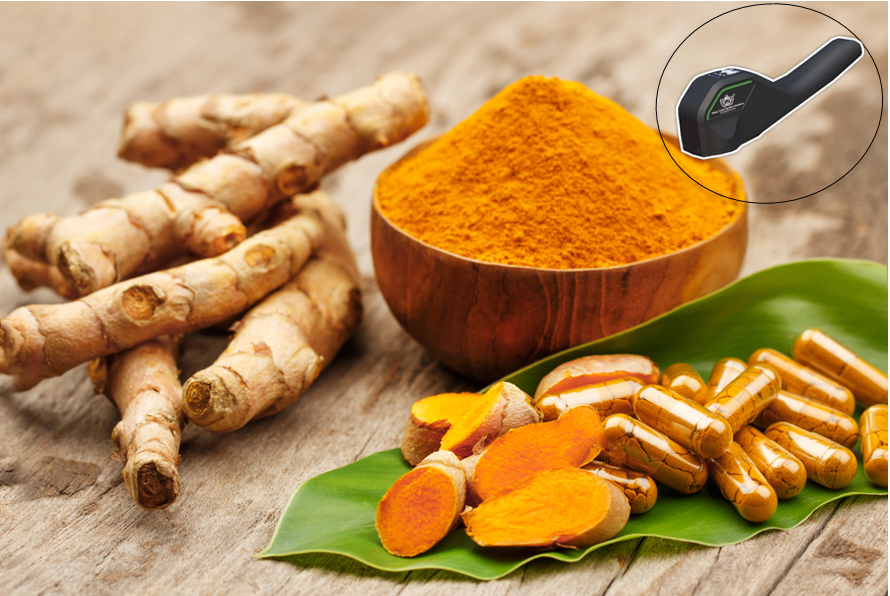Lakadong Turmeric: The Golden Spice of Meghalaya & How Technology Can Unlock its True Potential
Padmini Sampath

1. What Is Lakadong Turmeric?
Lakadong Turmeric is a landrace variety of Curcuma longa named after the Lakadong area in the Jaintia Hills region of Meghalaya, North East India. Indigenous communities domesticated it from wild stands in the hills and conserved seed stock through careful selection by farmers. Its deep golden colour and naturally high curcumin content, distinguish it from mainstream Indian turmeric market types such as Salem, Erode, Alleppey Finger, and Rajapuri.
Within Meghalaya, Lakadong occurs alongside two other local turmeric types— Laskein and Ladaw— but Lakadong commands the strongest premium because of its analytical profile and clean cultivation environment.
2. Geography & Agro‑Ecology
Primary Lakadong cultivation is concentrated in the Nongbah–Shangpung belt and adjoining clusters in East and West Jaintia Hills. Villages frequently cited for production include Shangpung, Raliang, Sahsniang, Lakadong, Mowkaiaw and many hill settlements where smallholders intercrop turmeric with food crops under tree cover.
Elevation, well‑drained hill soils, and high rainfall support vigorous rhizome development and bountiful expression of secondary metabolites such as curcuminoids.
3. Chemistry: Curcumin & Bioactives
Curcumin (diferuloylmethane) is the principal curcuminoid pigment in turmeric and the primary driver of its functional and commercial value. Lakadong routinely tests at >6% curcumin—and often 12% or more—versus 2–4% in many common Indian market grades. In the samples that we tested in Green Collar, we have seen some samples with greater than 18% Curcumin!
Other bioactives include demethoxycurcumin, bisdemethoxycurcumin, and volatile oil fractions (turmerone, atlantone, zingiberene) associated with aroma, absorption modulation, and bioactivity synergy. Processing strongly influences curcumin recovery and oil retention.
4. Nutritional & Medicinal Significance:
Turmeric has long been central to Ayurveda and folk medicine for antiseptic, anti‑inflammatory, digestive, and wound‑healing uses. Modern clinical and mechanistic research has evaluated curcumin for inflammatory joint disorders, metabolic syndrome, mood and cognitive health, gastrointestinal integrity, liver and kidney support, radiodermatitis, and adjunctive oncology pathways. Bioavailability enhancers such as piperine or novel delivery systems (liposomes, nanoparticles) improve systemic exposure.
High‑curcumin source material such as Lakadong reduces raw rhizome required per unit of standardized curcumin, an advantage for extract manufacturers and functional food producers.
5. Production Status & Trends in Meghalaya:
Meghalaya produces several spices, but turmeric is among the most scalable income options. Historical estimates place turmeric area in Lakadong belts at roughly 2,500+ hectares with state turmeric output around 16,000 MT in the mid‑2010s; Lakadong accounts for more than half the state’s turmeric area. Productivity averaged about 6 MT/ha but fluctuates with labour availability and land use shifts.
Government strategy now targets increased planting material, community seed banks, and expansion beyond 6,000 hectares to meet high‑curcumin market demand.
6. Mission Lakadong: Strategy & Targets:
Mission Lakadong is a five‑year, multi‑stakeholder programme led by the Directorate of Horticulture to scale production, quality, and market access for Lakadong Turmeric. Core goals: increase production to 50,000 MT; build brand equity and secure GI protection; establish tissue culture and rapid rhizome multiplication; create aggregation hubs and processing capacity; mobilize farmers; and enable value‑added enterprises and exports.
Funding convergence draws from State Horticulture, MNREGA (area development), NEC (processing, branding), and partners including NEHU, MIE, DRDA, and the Governor’s Secretariat for equipment and training.
7. Post‑Harvest Practices & Quality Challenges:
Traditional curing—slicing raw rhizomes and sun‑drying—can take weeks and exposes product to photodegradation of curcuminoids and microbial contamination. Improved practices recommend brief boiling/steaming followed by hygienic drying (solar, mechanical, or fuel‑efficient dryers) to stabilize colour and preserve curcumin, but adoption is uneven.
About 40 small private mills plus cooperative/public facilities in Laskein and Thadlaskein provide powdering, polishing, and some oleoresin extraction; many operate below capacity because of raw material variability, working capital limits, and limited certification pathways.
8. Markets, Pricing & the Premium Gap:
Most Lakadong trades through unregulated rural haats where small lots are aggregated by traders. Farm‑gate fresh prices have historically been ₹30–40/kg, dried slices ₹150–160/kg, while branded Lakadong packs in niche channels can exceed ₹1,000/kg. Volatility, opaque grading, and adulteration risks erode farmer margins.
Demand drivers include culinary use, natural colourants, functional beverages (turmeric lattes), nutraceutical extracts, and clean‑label cosmetics—segments where curcumin %, moisture, and contaminant data drive contract pricing.
9. GI Tag & Brand Protection:
Lakadong Turmeric received Geographical Indication (GI) registration in 2024 (GI No. 741) covering production from designated areas in West and East Jaintia Hills. Marketing turmeric grown outside the notified geography as ‘Lakadong’ is an infringement under the GI Act. GI status helps protect growers from mislabeling, supports traceability, and strengthens premium claims in domestic and export markets.
10. Opportunity Landscape for Farmers & Enterprises:
Premium Ingredient Supply: Curcumin-standardized extract raw material; natural colour/flavour lines.
GI-Certified Consumer Packs: Traceable Lakadong powder & slices with origin storytelling.
Community Seed Enterprises: Rapid rhizome multiplication; mother stock conservation.
Village Processing Services: Shared solar/mechanical dehydrators; fuel-efficient steamers.
Data-Driven Market Linkages: Aggregation hubs with digital grading & analytics dashboards.
11. How TARAM Can Accelerate Lakadong Value Chains:
TARAM is Green Collar Agritech’s portable, AI-enabled spice quality analyzer designed for field conditions. By scanning small volume samples of turmeric, TARAM can generate rapid readouts on curcumin %, moisture %, oleoresin% and starch% .
Field analysis and analytics reduce the need for distant labs, speed price discovery, and create digital records that plug into GI traceability systems.
More details about TARAM are at https://greencollar.ai/products/taram
